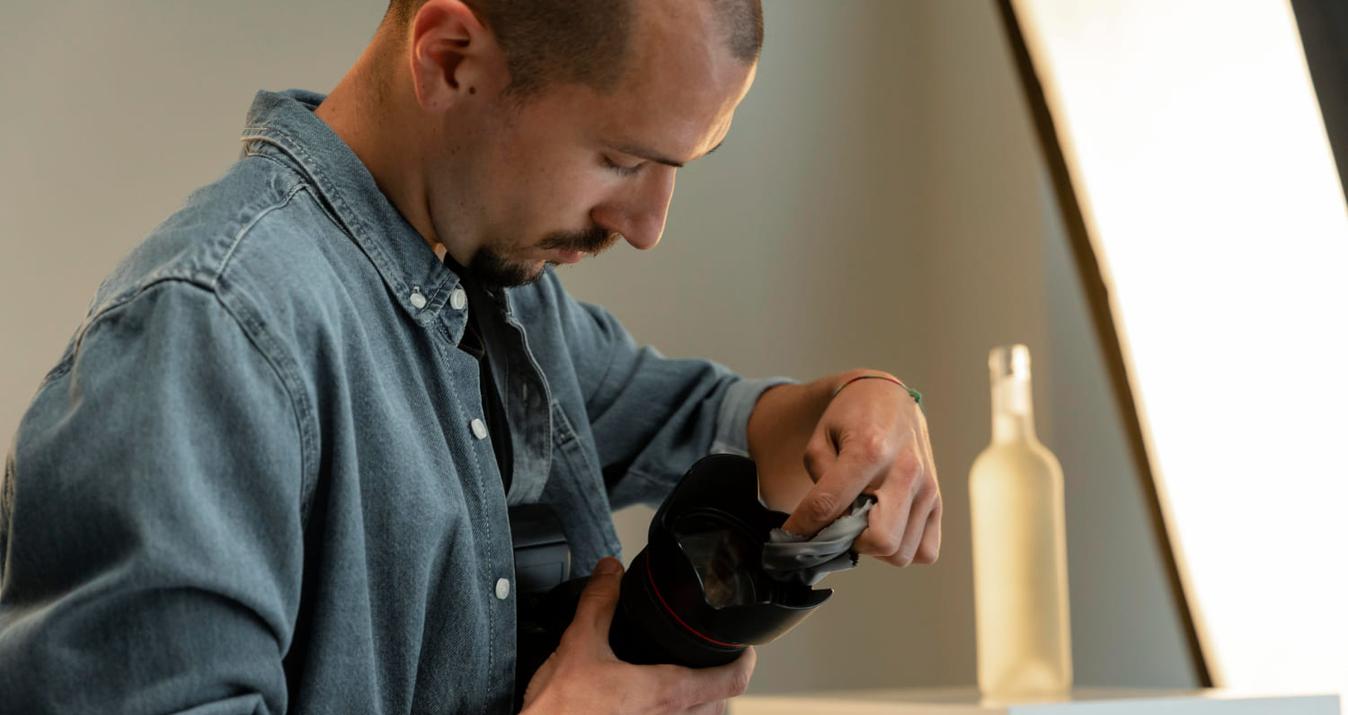How To Photograph Clothes: Guide For Retail Professionals
March 11, 2024

Are you worried about the question of how to photograph clothes attractively so that they arouse the interest of buyers? Welcome to apparel photography. In our blog today, we will talk about the basic techniques you need.
The dynamics of the retail industry require exciting clothing photography. It is the key to standing out among competitors. A bright, high-quality, juicy picture is the first thing a buyer notices and, therefore, one of the main elements of successful product sales.
This article will explore the basic techniques and secrets of ecommerce clothing photography. We have some practical tips for improving your fashion photography game, from choosing the right equipment and setting up the perfect lighting to styling the clothes and directing the models. Let's dive into the intricacies of clothing product photography to give you the impetus to create compelling images that drive sales and make a lasting impression on your audience.
Understanding Clothing Photography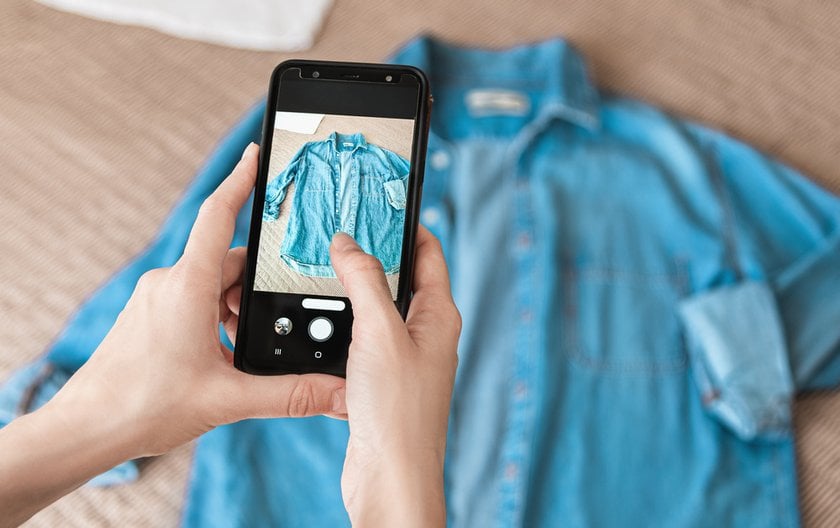
Various styles and techniques in clothing photography serve specific purposes in showcasing it. The two main types include flat lays and Model Shots. Each type of clothing photography serves a particular purpose and can be used strategically to convey information about different aspects of clothing, ultimately influencing consumer perception and purchase decisions. Whether you choose flat lays or model shots, understanding the strengths and goals of each approach is key to effectively showcasing your garments and engaging your target audience.
Flat Lays:
This technique involves placing clothing items on a flat surface and photographing them from above. Laying flat is ideal for displaying clothing such as tops, bottoms, shoes and accessories. These are commonly used for e-commerce product listings, social media marketing, and fashion blogs. Flat lays offer versatility and can be easily customised to match brand aesthetics or seasonal themes.
Model Shots:
Garments on models provide context for how the garment looks when worn and help potential buyers imagine themselves in the garment. Photographs of models are commonly used in fashion editorials, lookbooks, and advertising campaigns to reflect the lifestyle or aesthetic associated with a brand. They allow you to demonstrate a garment's fit, movement and styling possibilities, increasing its desirability and appeal.
Advanced yet easy-to-use photo editor
Get Luminar Neo NowEssential Equipment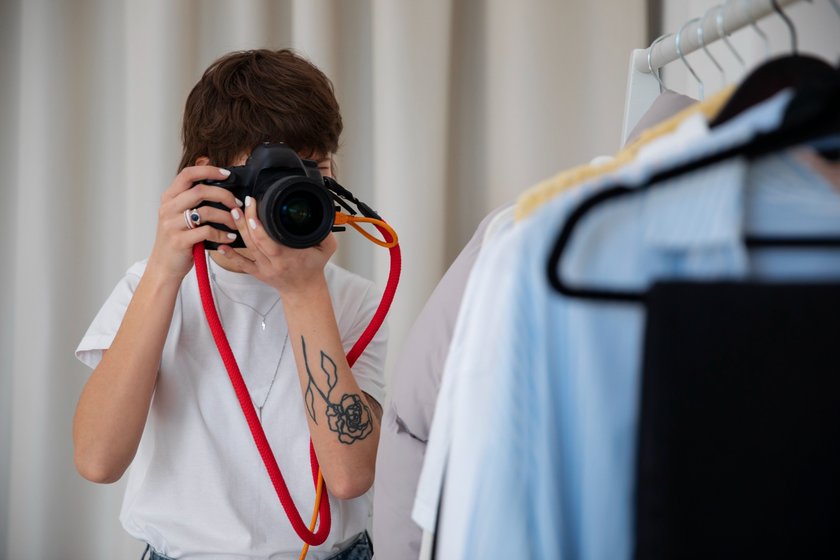
The right clothing photography setup starts with the right gear and equipment. You need to convey the clothes' shape, details, colour and texture. Here is a short list of what you will need:
Camera
Smartphones are replacing almost everything now, but if we talk about professional shooting and subsequent posting of photos on billboards and websites, you cannot do without a good camera. Buy a high-quality digital SLR or mirrorless camera with manual settings for optimal exposure and focus control. Consider factors such as resolution, sensor size, and compatibility with interchangeable lenses.
Lenses
Choose lenses with a focal length suitable for clothing photography, such as a standard zoom lens (e.g. 24-70mm) for versatile shooting or a fixed focal length lens (e.g. 50mm) for sharp, detailed shots. Research the best focal length for product photography before buying to make the right investment.
Tripod
A sturdy tripod is indispensable for any shooting. It will help when shooting from any angle, in poor lighting conditions, or with a shorter shutter speed.
Lighting
You need a lighting system using softboxes, umbrellas, or diffusers to create even, pleasant lighting without distorting the colour. Consider investing in continuous lighting or strobe lights for constant and adjustable lighting.
Backgrounds and Props
Always choose clean, neutral backgrounds to highlight items of clothing. Experiment with props such as mannequins, hangers or accessories to add visual interest and context to your photos.
Exclusive Tools of Endless Possibilities in One AI Editor
EXPLORE NOW!Lighting Techniques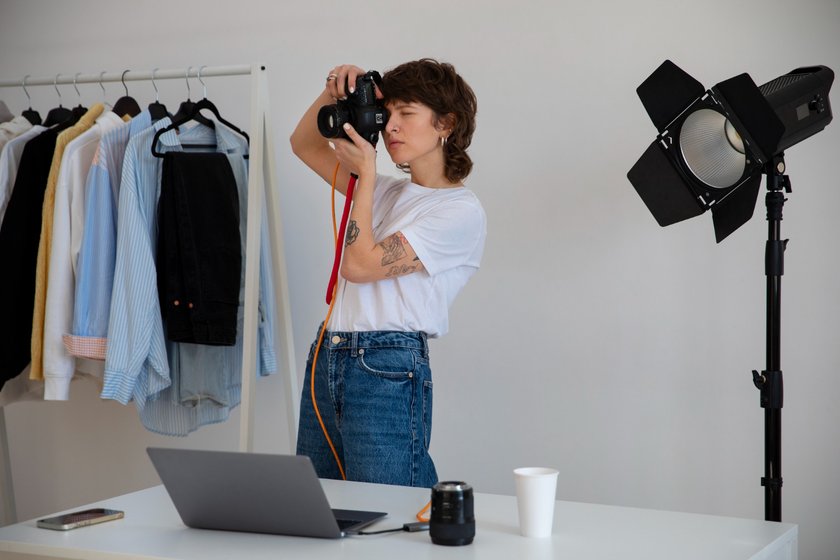
To capture and convey true colours, textures, and details, you'll need an understanding of the basic lighting techniques for clothing photography:
Natural
You will get true colours and textures by placing clothes near windows or shooting outdoors. Give preference to soft, diffused natural light and avoid sharp shadows.
Studio Lighting
To install controlled lighting, use softboxes and diffusers. Experiment with different angles and intensities to reduce shadows and highlight the main features of the garment.
Backlighting
Place the light source behind the garment to create a soft glow around the edges, emphasising its silhouette and adding depth to the image.
Three-Point Lighting
Use three-point lighting, which consists of a main light, a fill light, and a backlight, to illuminate the garment from different angles and eliminate shadows evenly.
Styling and Composition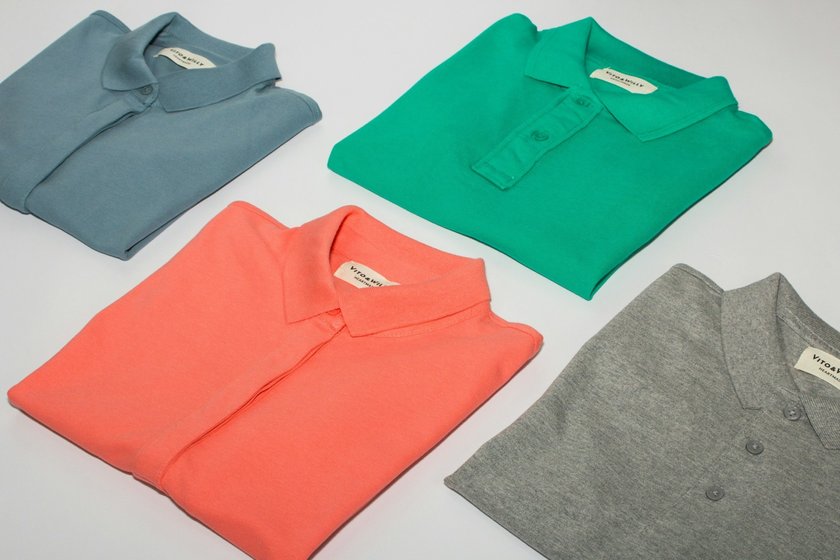
Ecommerce clothing photography requires style and composition. These two elements can show the same wardrobe from the good side and completely spoil the impression. Here are some tips to help you create attractive images:
Plan Outfits
Choose items that complement each other in colour, style and texture to create cohesive and visually appealing ensembles. When choosing an outfit, consider your target audience and desired aesthetic.
Use Props and Accessories
Props and accessories will add interest and context to images. Jewellery, bags, hats or shoes can enhance the overall look and give customers clues about how to match the elements, thus encouraging them to buy additional pieces.
Pay Attention to Details
Make sure the garments are steamed or ironed to remove wrinkles and creases. Pay attention to small details such as buttons, zippers and seams to show the quality and craftsmanship of the garment.
Experiment with Angles and Perspectives
Emphasise the best features of wardrobe items by choosing different perspectives and shooting angles. Experiment with close-ups, overhead and full-body shots to capture additional details and silhouettes.
Create Depth and Dimension
Try layering, folding and arranging techniques to create depth and dimension in your compositions. Play with different compositions and placements to create visually dynamic and interesting images.
Directing Models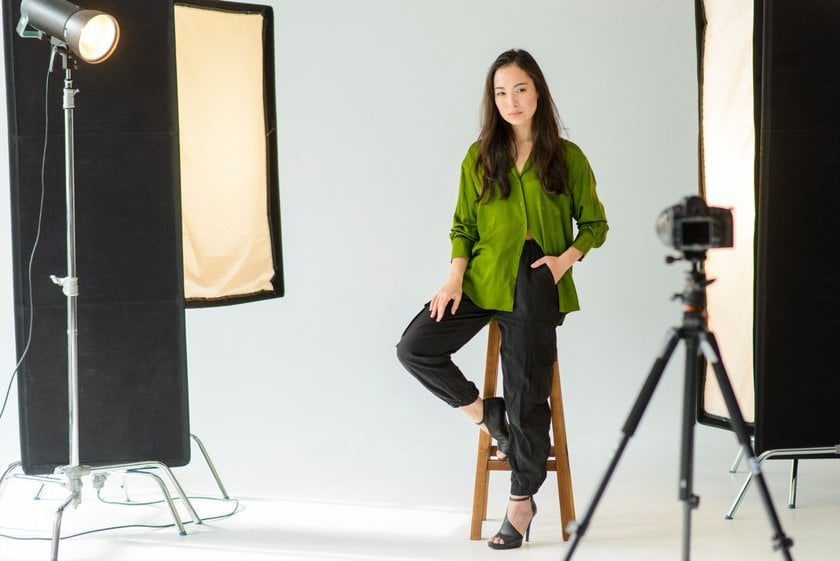
Effective management of models is the best way to photograph clothing. You can emphasise the best features of the clothes and make them more attractive to potential customers. To do this, follow these simple tips:
Establish Clear Communication
Communicate your vision, expectations and preferred poses to the models. Provide examples or sketches to illustrate the desired look and feel of the images.
Pose Coaching
Make a pose that shows off the clothing items in their best light. Direct models to highlight key clothing features, such as necklines, sleeves or hems, in their poses. Pay attention to facial expression and hand placement to ensure your final images look polished and professional.
Capture Movement
Experiment with dynamic poses and movements to add energy and personality to your photos.
Post-Processing
In clothing product photography, post-processing is crucial in improving images and ensuring they meet professional quality standards. Photo editing for ecommerce is not a difficult process but still requires concentration, attention and quality results. Here's how to effectively use post-processing methods in the Luminar Neo editor:
Colour Correction
Adjust colour balance, saturation, and hue to reflect the colours and textures of clothing accurately. Ensure image consistency to maintain brand identity and product integrity.
Exposure Adjustment
Fine-tune exposure settings to achieve optimal brightness and contrast levels. Image brightness editor will help you easily correct any overexposed or underexposed areas so that the details of the clothes look right.
Retouching
Use a retouching technique to remove imperfections or distractions, such as wrinkles, blemishes, or extraneous threads. Make sure the clothes look flawless in the final images.
Background Removal
Feel free to remove distracting backgrounds or clutter from images to focus on the garments. Change the background colour of the photo, or use techniques like background replacement or clipping paths to create clean, professional-looking photos.
Sharpening and Detail Enhancement
Apply sharpening filters and detail enhancement tools to highlight textures and fine details in clothing. Enhance fabric patterns, seams, and other intricate features to make garments stand out. Structure AI improves the structure of materials, and with Enhance AI, you can increase the image quality for further large-format printing or placement on the web pages of stores.
Share the Result
Learn how to post multiple pictures on Instagram without cropping and share your work with the audience. Consider agreements with clients and brand management before sharing photos. Create your professional portfolio directly on popular social networks to attract new clients effectively.
Bottom Line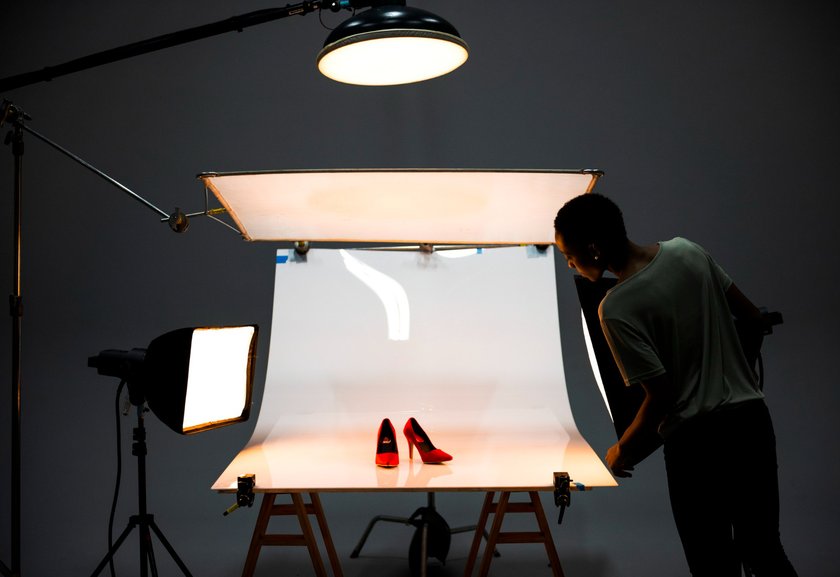
Mastering the art of apparel photography is essential for retail professionals looking to showcase and sell their products effectively. When you understand imperative equipment, lighting techniques, styling and composition principles, directing models, and post-processing methods, creating captivating images that resonate with their target audience is easy. Focus on practice, creative experimentation and researching the work of other photographers working with successful brands to gain inspiration and improve your skills. Let your best way to photograph clothing be enjoying the process!











